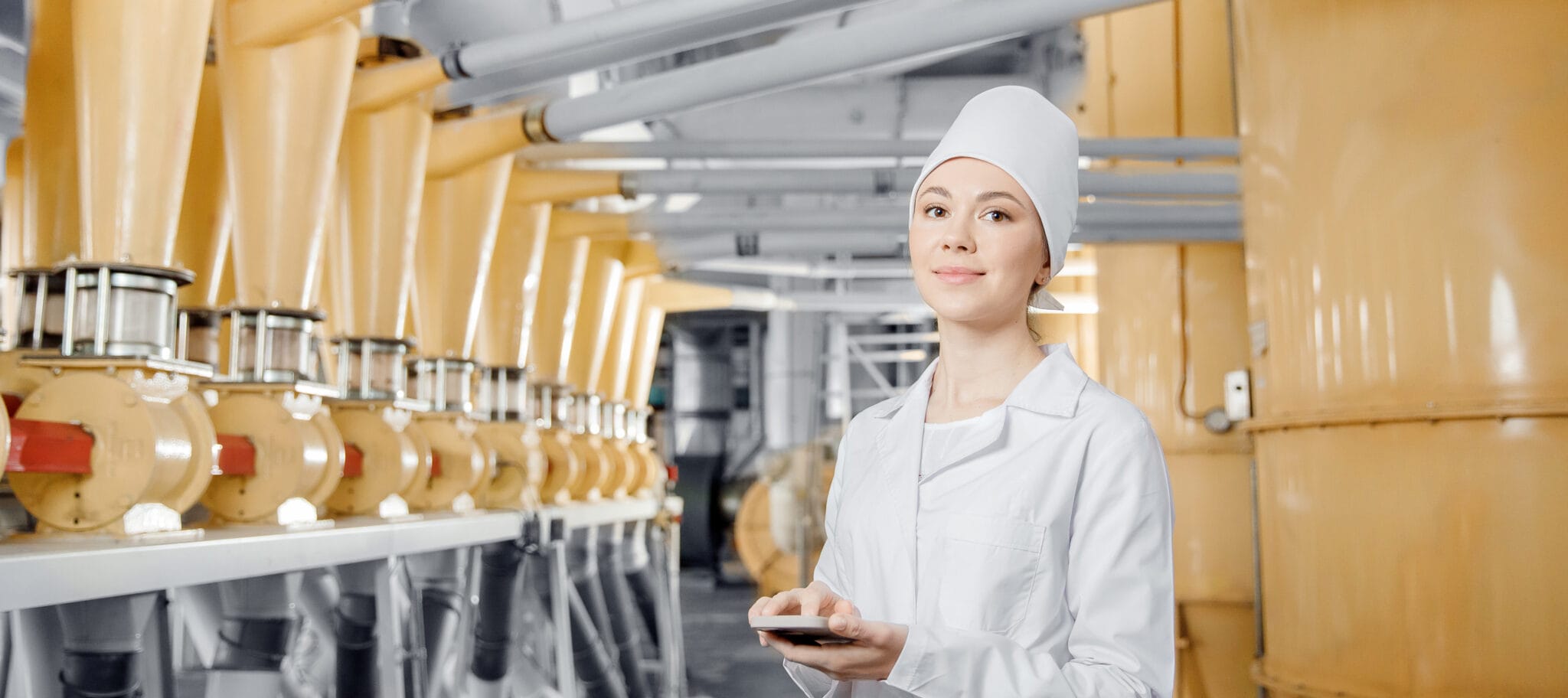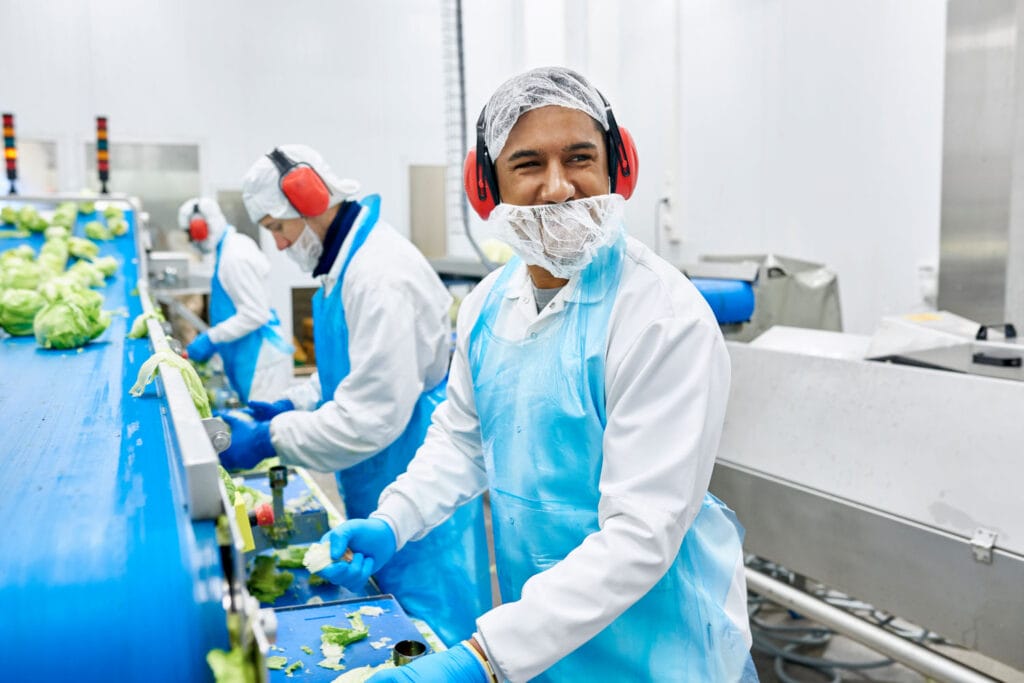
Food safety and contamination prevention with compliant workwear
A key purpose of workwear in the food industry is to protect products and maintain food safety in the production process, minimising contamination risks. The design should consider hygiene and industry requirements yet be comfortable and suitable for employees’ work. Suitability also involves compliance with temperature and humidity conditions in the working area.
Did you know?
Bacteria can survive for up to 21 days on the surfaces of washed workwear.
* The Society for Applied Microbiology 2017: The effect of low-temperature laundering and detergents on the survival of Escherichia coli and Staphylococcus aureus on textiles used in healthcare uniforms
This article gives you concrete advice on good workwear design in food production facilities. From metal-free fasteners to strategic pocket placement, learn how textiles act as a barrier against contaminants, protecting both products and processes. Read more to find out how hygienic workwear keeps food safe, employees satisfied, and perhaps most importantly; compliant with industry regulations.
Consider this when choosing workwear for food production facilities
In food production facilities, workwear should not have rips, tears, or fraying material. The clothing should not have buttons or pockets above waist level. In high-risk areas, the garments should not have external openings, and all fasteners should be metal. A good practice is to assess the different risk levels in the facilities and choose workwear with suitable designs for each level. Implement control systems to ensure that only the designated garments are in use in the defined production areas.
Standards indicating workwear design and food safety requirements:
- DIN 10524, a standard describing hygiene requirements for workwear in food risk areas..
- BRCGS FOOD for guaranteeing the standardisation of quality, safety, and operational criteria, ensuring consumer protection.
- IFS FOOD for ensuring food safety and process optimisation.

Best practices for food safety and hygiene through workwear design

Fabric and materials
Consider the materials carefully. Workwear garments in food production facilities should be:
- Durable and resistant to wear and tear, even after several wash cycles
- White or light-coloured, which makes it easier to see if the garment is dirty.
- A polyester/cotton fabric/knit within a specific mass per unit area range of 150 g/m² to 400 g/m².
Length of coats and jackets
- Coats and jackets must be worn closed and be long enough to cover the side pockets on trousers.
Pockets
- Avoid all pockets completely for extremely high hygiene risk level (RC3) workwear
- Garments can have inside closable pockets below the waist in medium hygiene risk level (RC2).
- Workwear can have pockets that are closable with a flap in a low hygiene risk level (RC1) to stop items from falling out
Design
- Avoid elements and parts in workwear that pose a foreign material risk, such as buttons. The design should have functional details that ensure comfort.
Logos
- All logos should be permanently fastened to the garment. They need to be of a high enough quality to last throughout the workwear’s entire life cycle.
Sleeves
- Long-sleeved garments are highly recommended. Workwear in all risk levels should have long sleeves to protect food from direct contact with employees’ skin. The sleeves’ width should be adjustable.






